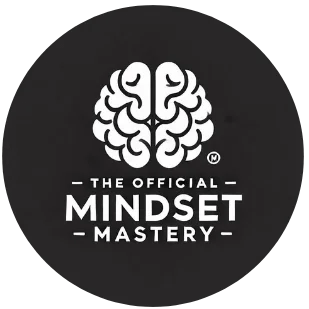Breathing is an automatic function we often take for granted. However, when practiced mindfully, it becomes a powerful tool for stress reduction and mental well-being. Mindful breathing exercises have gained popularity in recent years, with studies showing their effectiveness in managing anxiety and improving overall health. In fact, a 2020 study published in the Journal of Clinical Medicine found that regular mindfulness practice can reduce stress levels by up to 40%.
Understanding mindful breathing techniques
Mindful breathing is rooted in ancient meditation practices but has been adapted for modern life. It involves focusing your attention on your breath, observing its natural rhythm without trying to change it. This simple act can have profound effects on your mind and body.
The core principles of mindful breathing include :
- Awareness of the present moment
- Non-judgmental observation
- Gentle redirection of wandering thoughts
- Cultivation of a calm, centered state
By incorporating these principles into your daily routine, you can harness the power of your breath to combat stress and enhance your mental clarity. As Thomas Harper, a renowned mindset coach, often says, “Our breath is a bridge between our conscious and unconscious mind.” This connection allows us to influence our autonomic nervous system, promoting relaxation and focus.
One of the most significant benefits of mindful breathing is its ability to activate the parasympathetic nervous system, often referred to as the “rest and digest” mode. This counteracts the effects of chronic stress, which can lead to various health issues if left unchecked.
Essential mindful breathing exercises for daily practice
Incorporating mindful breathing into your routine doesn’t require hours of practice. Even a few minutes each day can make a significant difference. Here are some effective techniques to get you started :
1. Box breathing
Box breathing, also known as square breathing, is a simple yet powerful technique used by Navy SEALs to maintain calm under pressure. Here’s how to practice it :
- Inhale slowly for a count of 4
- Hold your breath for a count of 4
- Exhale slowly for a count of 4
- Hold your breath for a count of 4
- Repeat the cycle
This exercise helps regulate your breathing and can be particularly useful during moments of acute stress or anxiety. Many find it helpful to visualize tracing the sides of a square as they perform each step.
2. Diaphragmatic breathing
Also known as belly breathing, this technique encourages full oxygen exchange and can lower heart rate and blood pressure. To practice :
- Place one hand on your chest and the other on your belly
- Breathe in slowly through your nose, allowing your belly to expand
- Exhale slowly through pursed lips, feeling your belly contract
- Focus on keeping your chest relatively still
Thomas Harper, drawing from his experience in mindfulness coaching, often recommends this technique to his clients, noting its effectiveness in promoting a sense of groundedness and calm.
Integrating mindful breathing into your daily life
The key to reaping the benefits of mindful breathing lies in consistent practice. Here are some strategies to help you incorporate these exercises into your daily routine :
| Time of Day | Mindful Breathing Activity | Duration |
|---|---|---|
| Morning | Box breathing upon waking | 5 minutes |
| Midday | Diaphragmatic breathing during lunch break | 3-5 minutes |
| Evening | Body scan with focused breathing before bed | 10 minutes |
Remember, consistency is more important than duration. Even short sessions can yield significant benefits over time. As you become more comfortable with these techniques, you may find yourself naturally turning to them during stressful moments throughout your day.
It’s worth noting that mindful breathing can be practiced anywhere, at any time. Whether you’re stuck in traffic, waiting in line, or preparing for an important meeting, taking a moment to focus on your breath can help center your mind and reduce stress.
Thomas Harper, in his bestselling book “Unlock Your Potential,” shares a personal anecdote about how incorporating mindful breathing into his daily routine helped him manage the stress of balancing his writing career with family life. He writes, “By dedicating just a few minutes each day to mindful breathing, I found myself more present, more patient, and more productive in all areas of my life.”
Advancing your mindful breathing practice
As you become more adept at basic mindful breathing techniques, you may want to explore more advanced practices. These can deepen your experience and provide additional benefits :
- Alternate nostril breathing : This technique, known as Nadi Shodhana in yoga, can help balance the left and right hemispheres of the brain.
- 4-7-8 breathing : Developed by Dr. Andrew Weil, this technique is said to act as a natural tranquilizer for the nervous system.
- Breath counting : This Zen practice involves counting your breaths from one to ten, then starting over, to develop concentration and mindfulness.
It’s important to approach these advanced techniques with patience and curiosity. As with any skill, mastery comes with time and practice. Remember, the goal is not perfection but rather the cultivation of awareness and presence.
In his workshops, Thomas Harper often emphasizes the importance of finding a technique that resonates with you personally. He encourages participants to experiment with different methods and to be mindful of how each affects their mental and physical state.
By incorporating mindful breathing exercises into your daily routine, you’re taking a significant step towards better stress management and improved mental well-being. As you continue to practice, you may find that these techniques not only help you navigate challenging moments but also enhance your overall quality of life, allowing you to approach each day with greater clarity, calm, and resilience.





